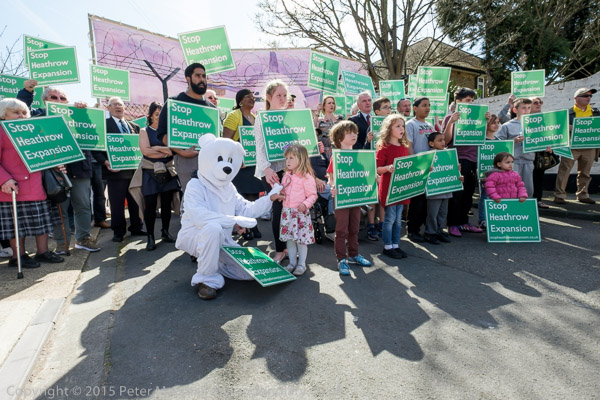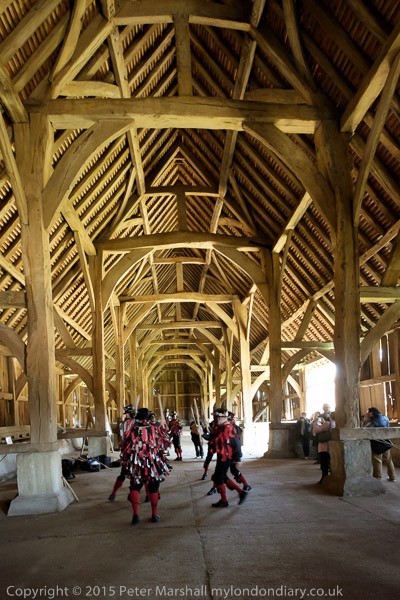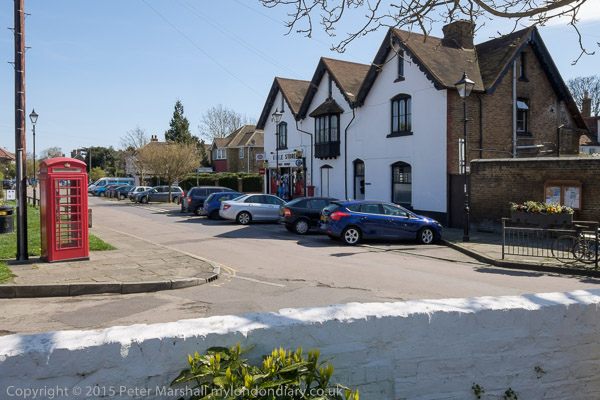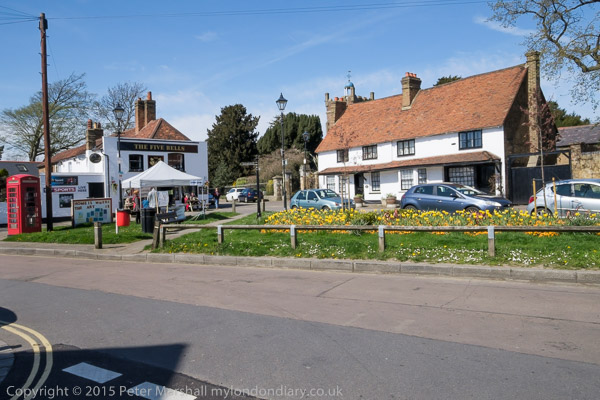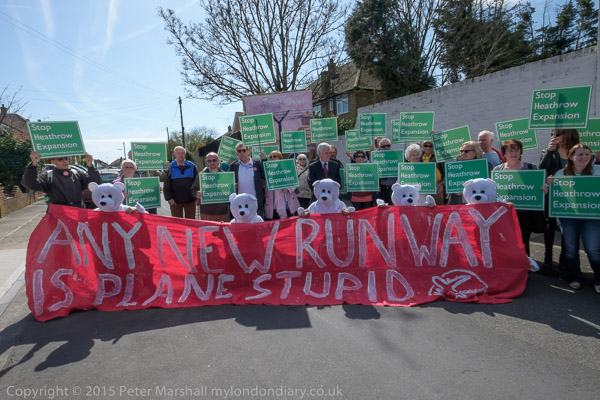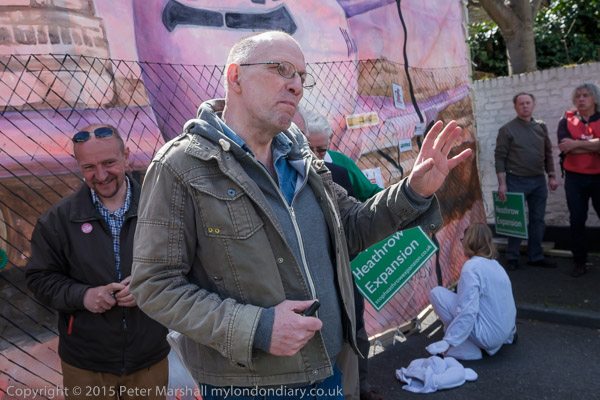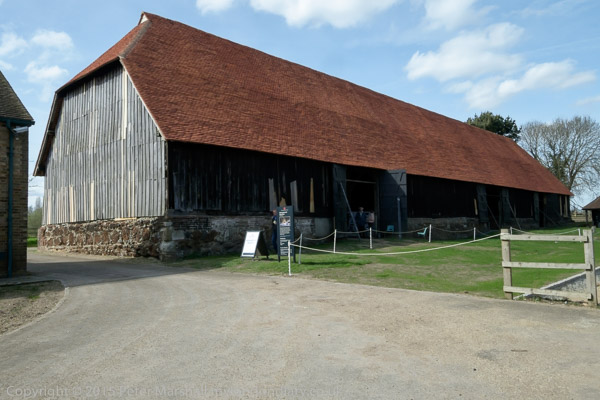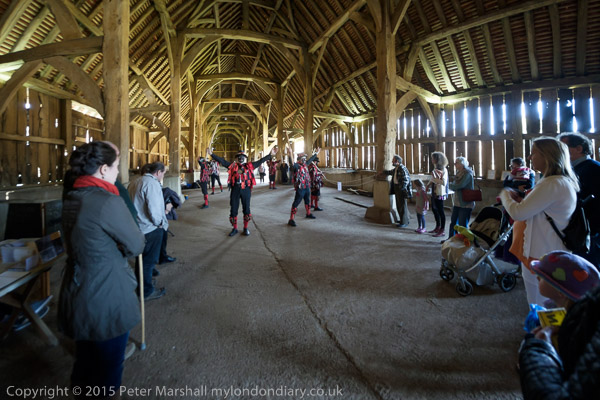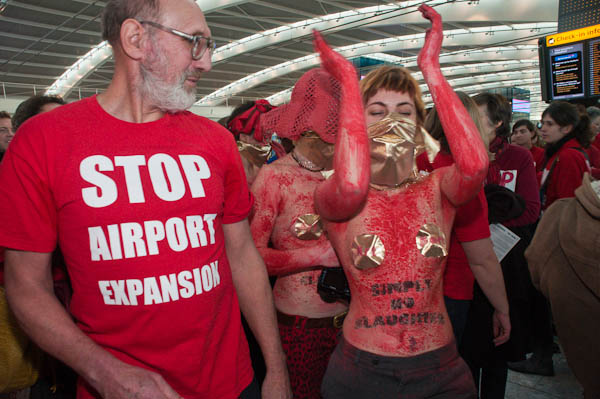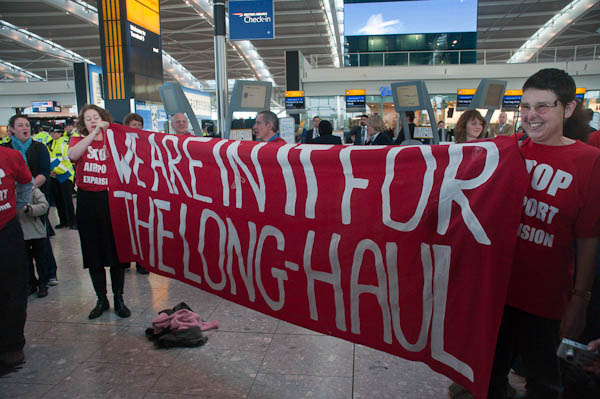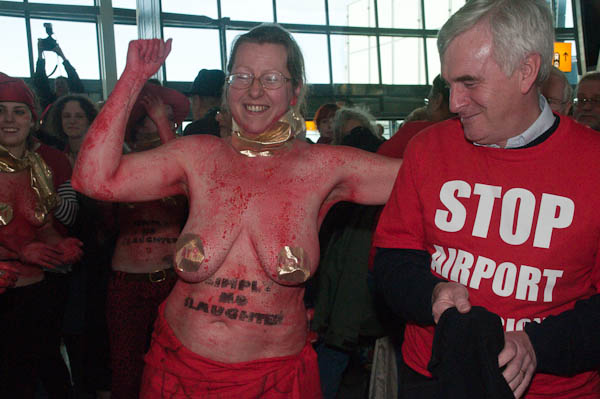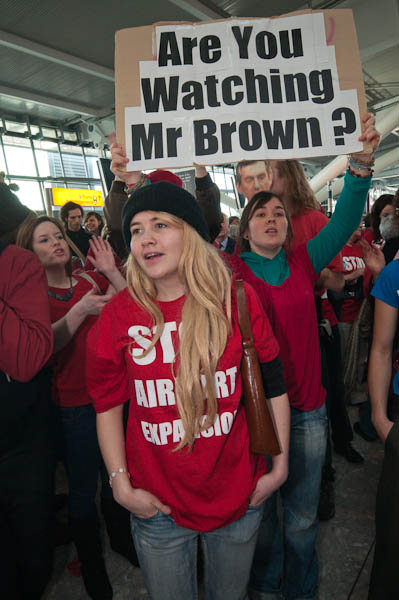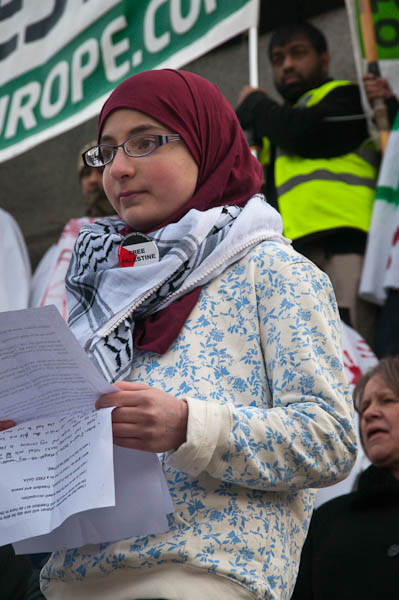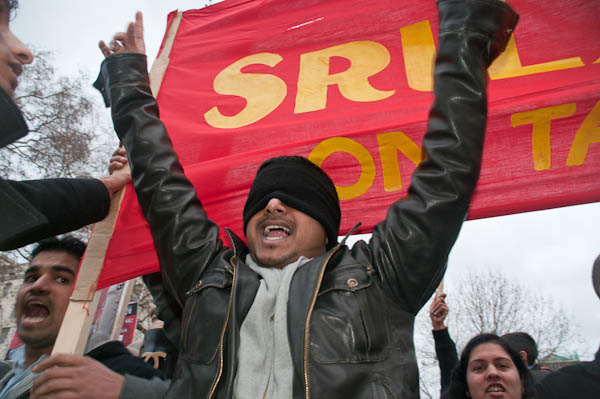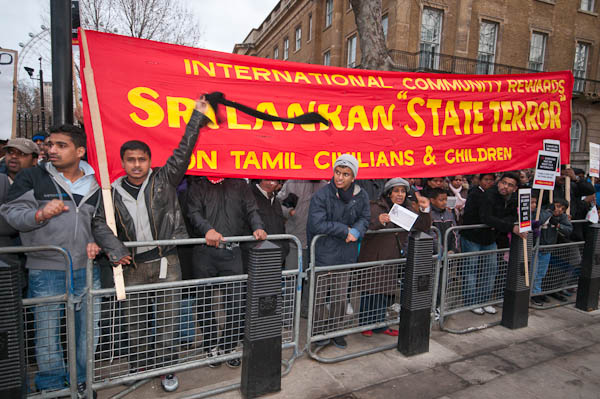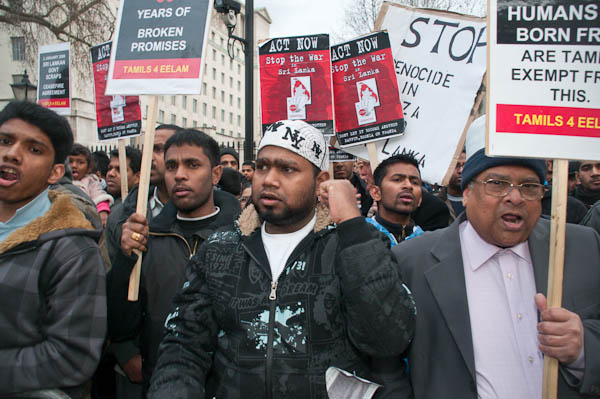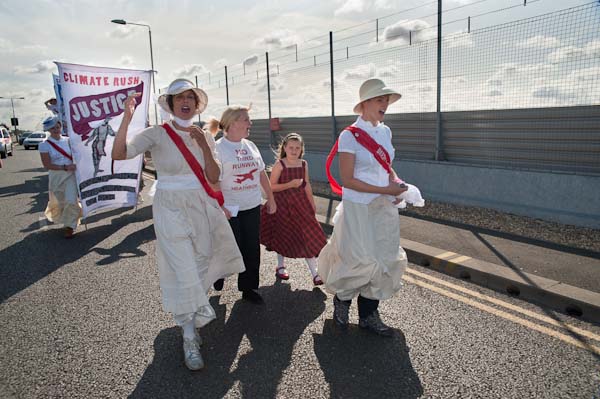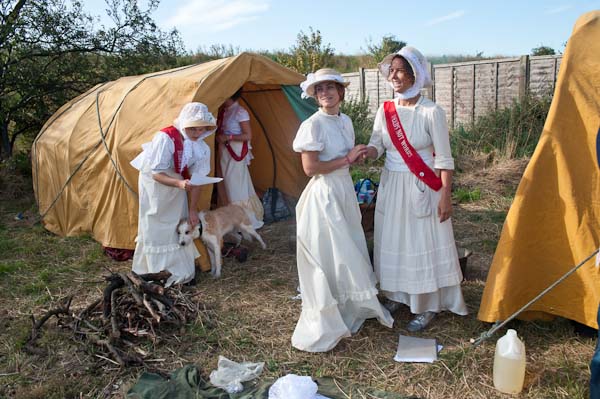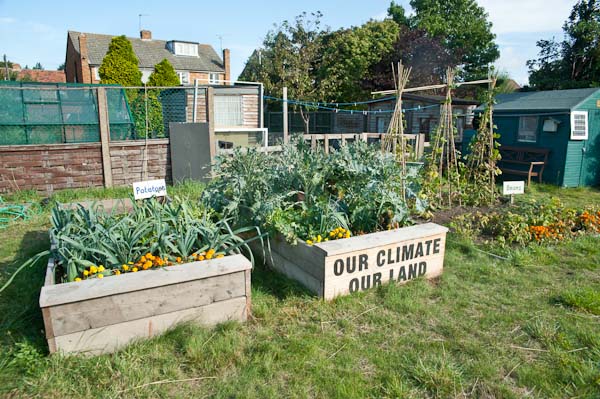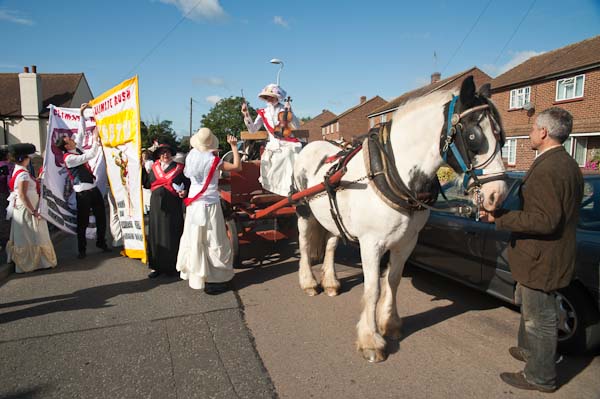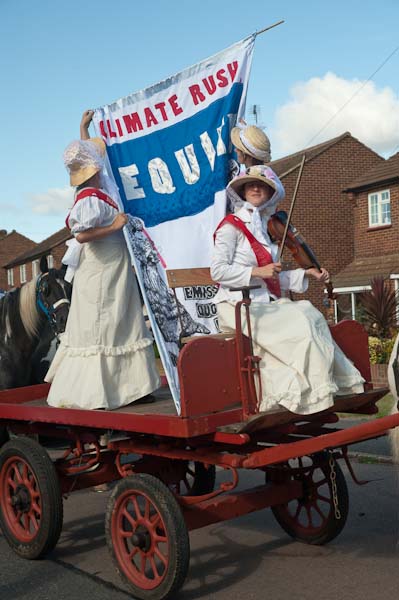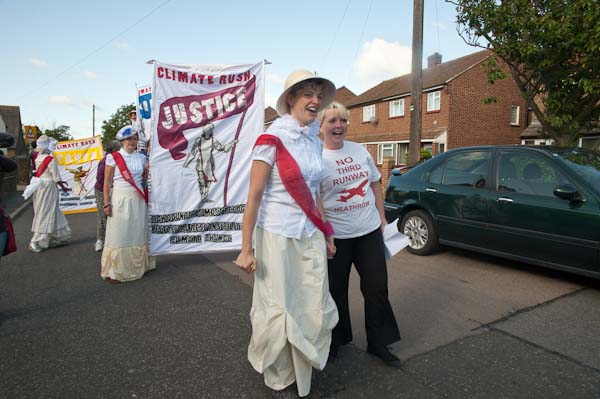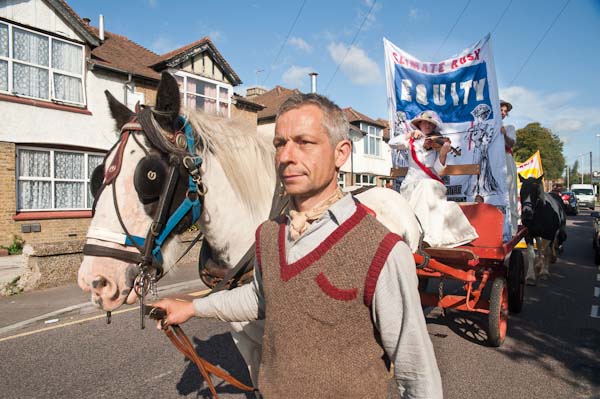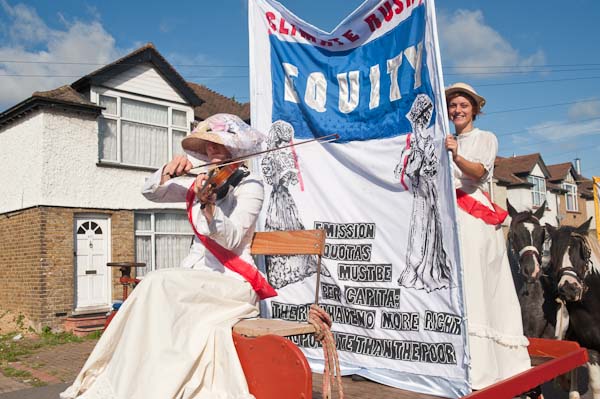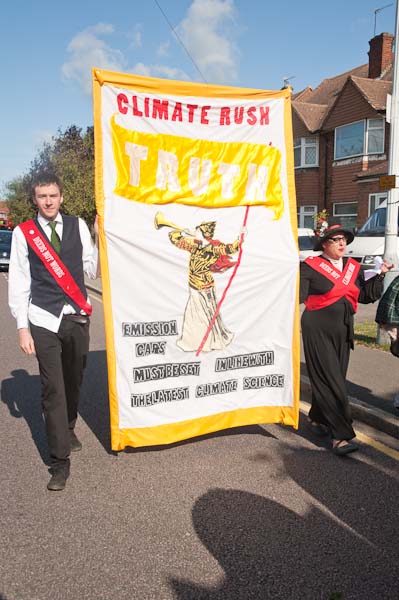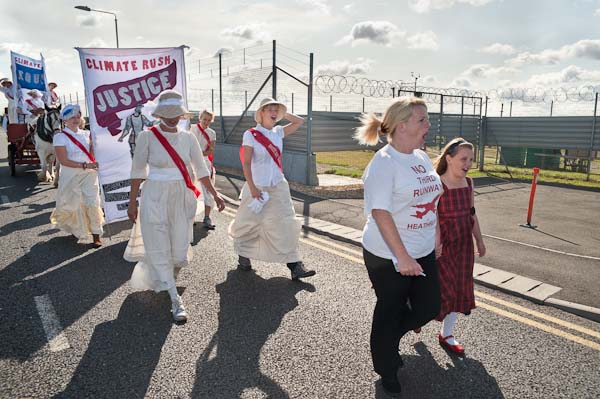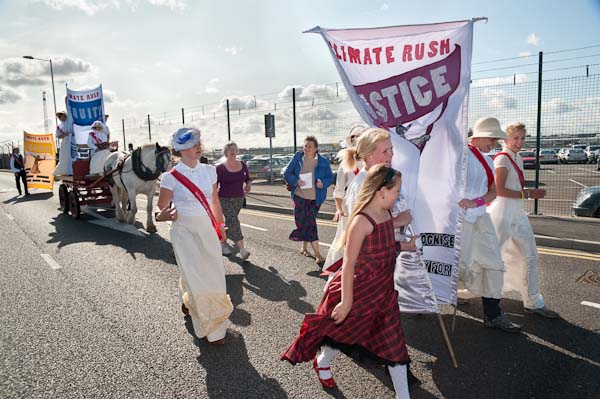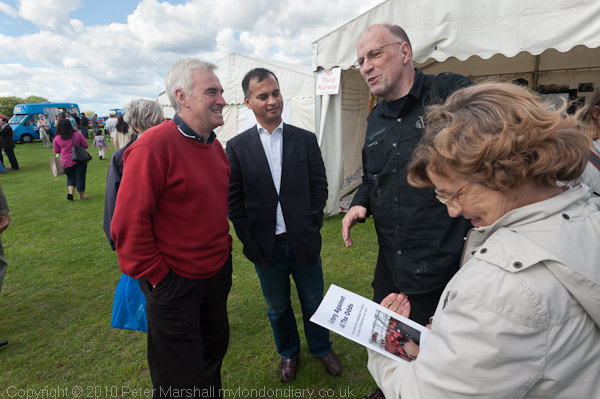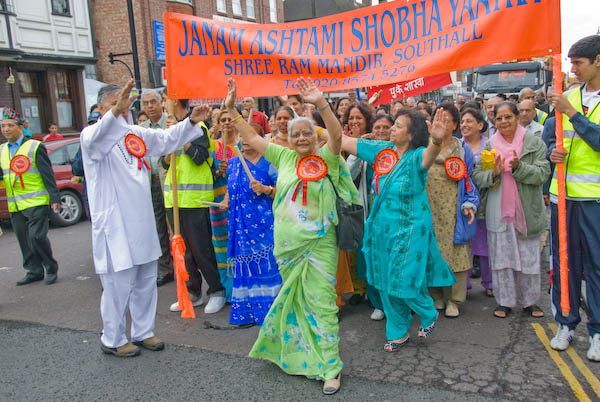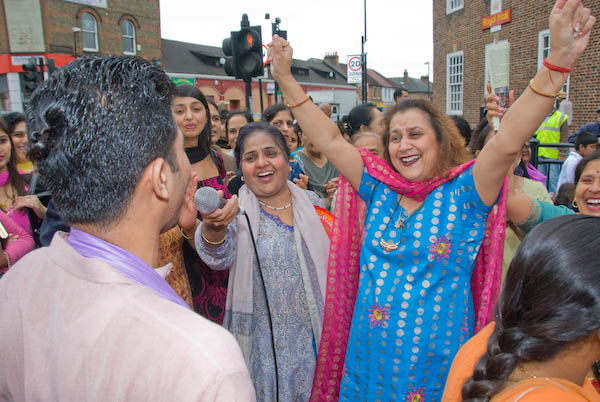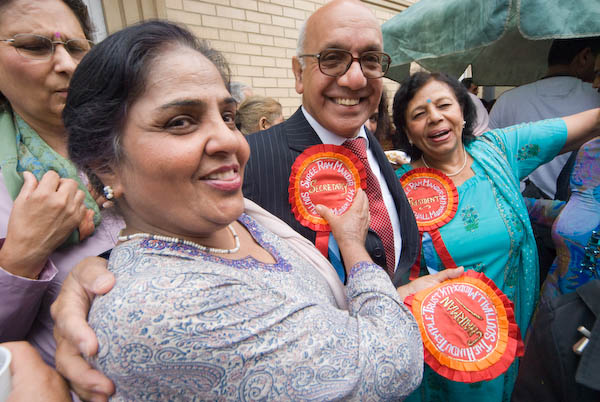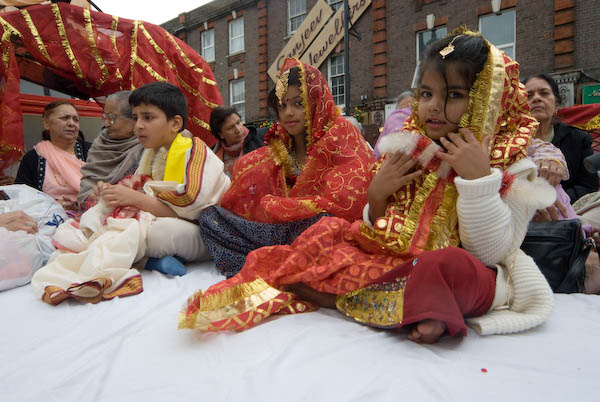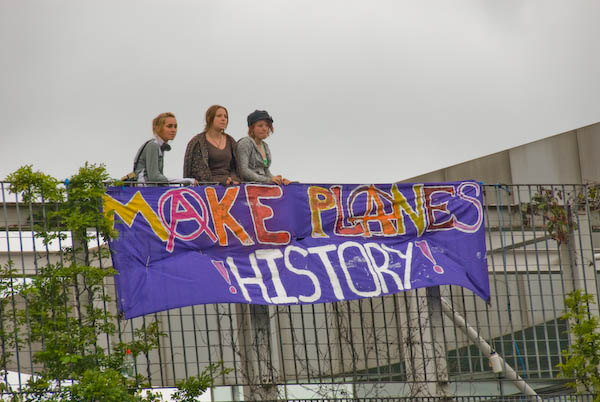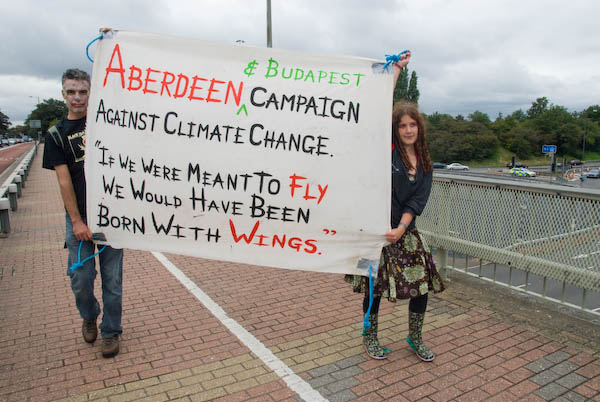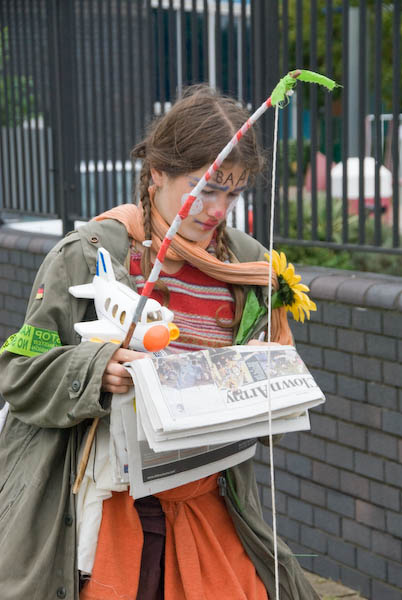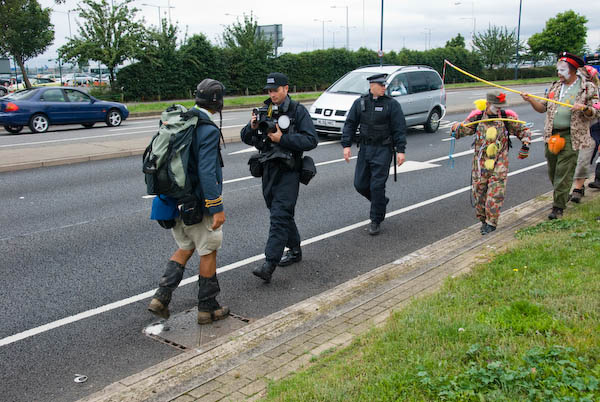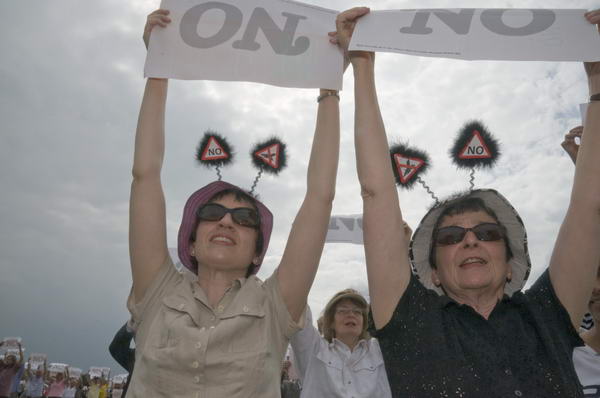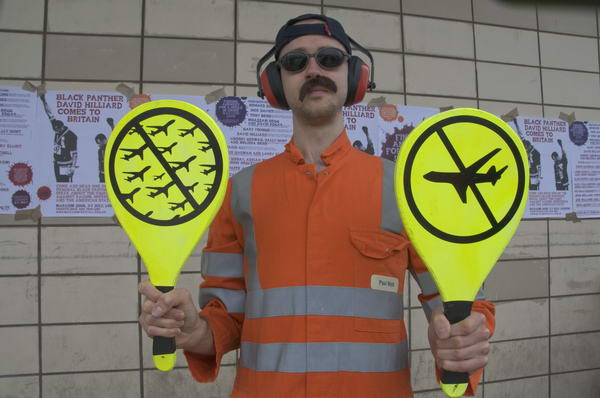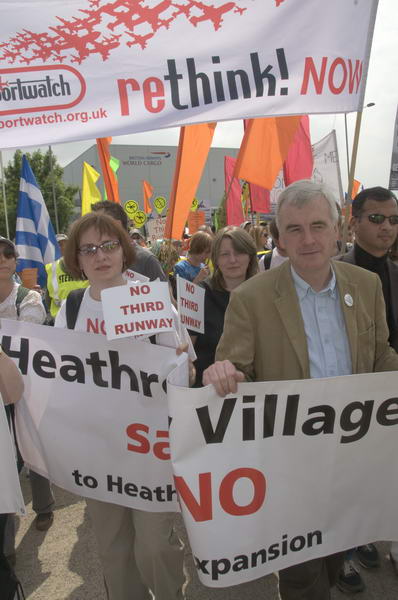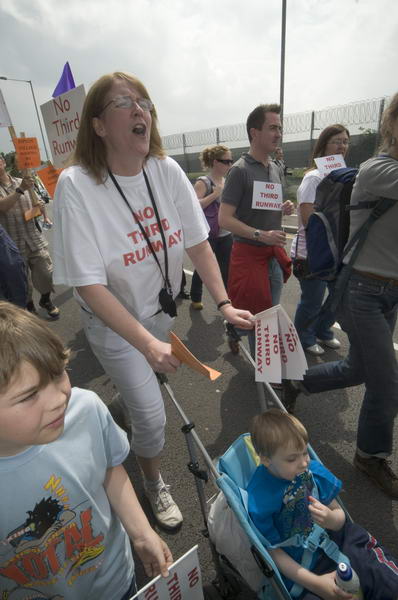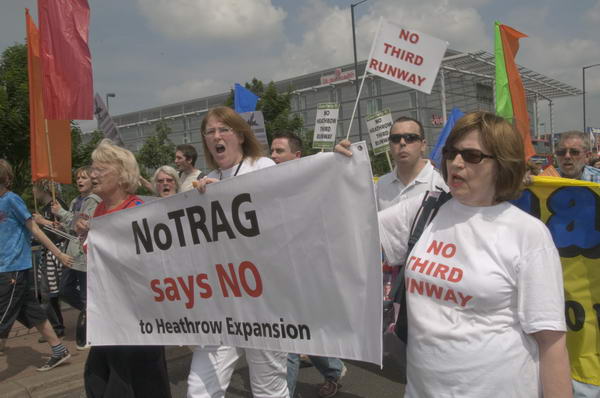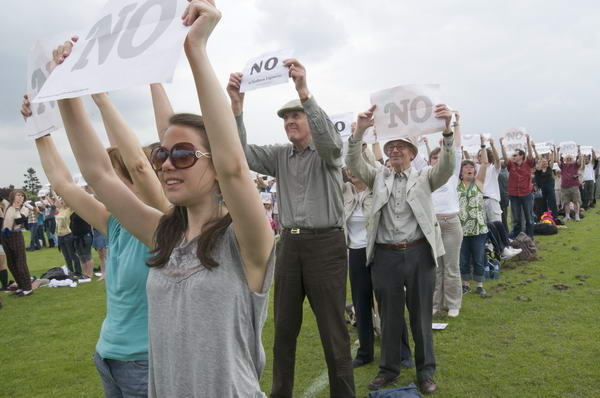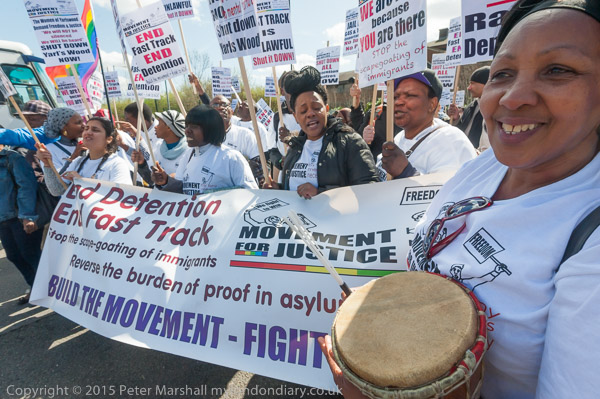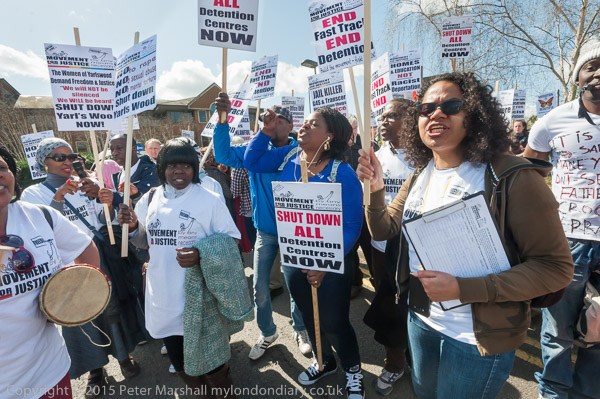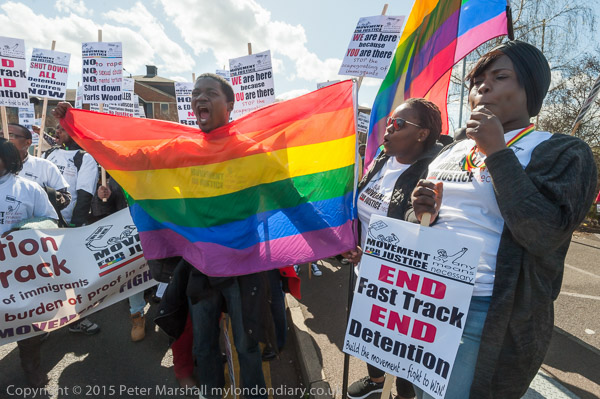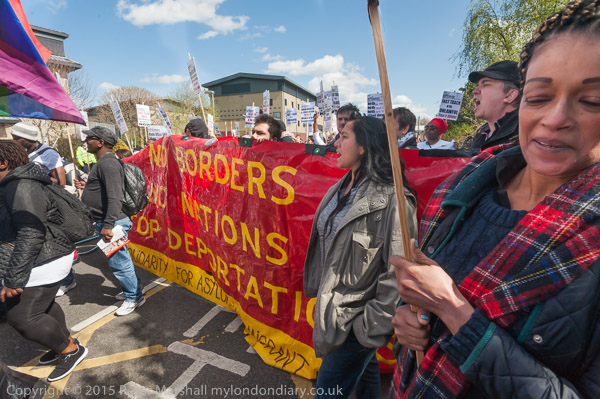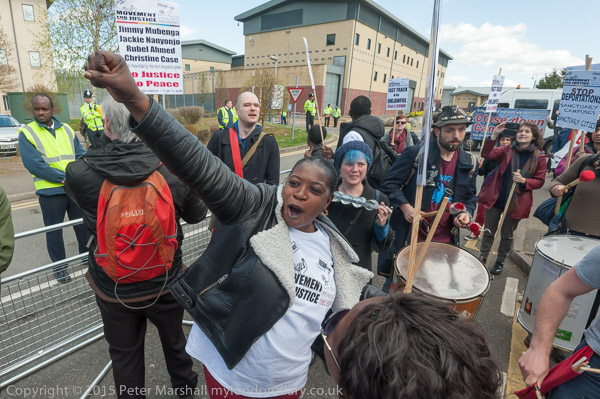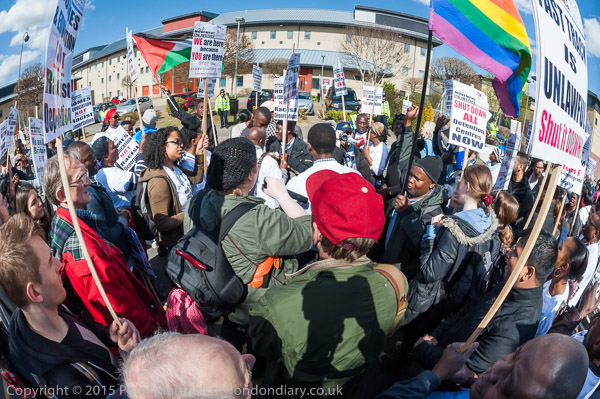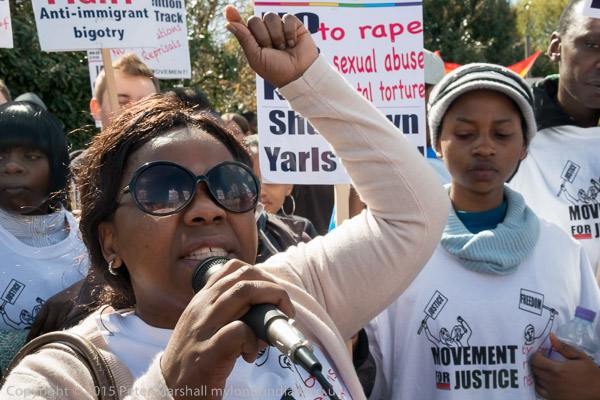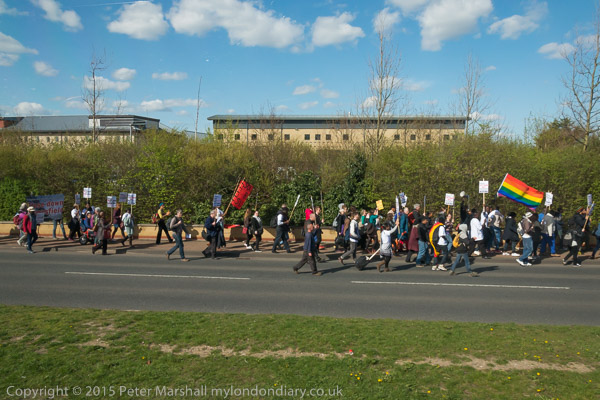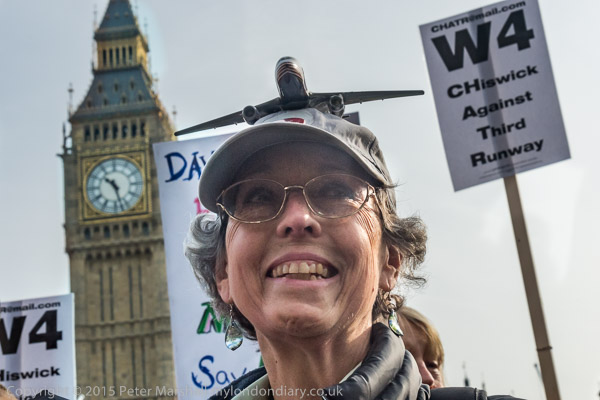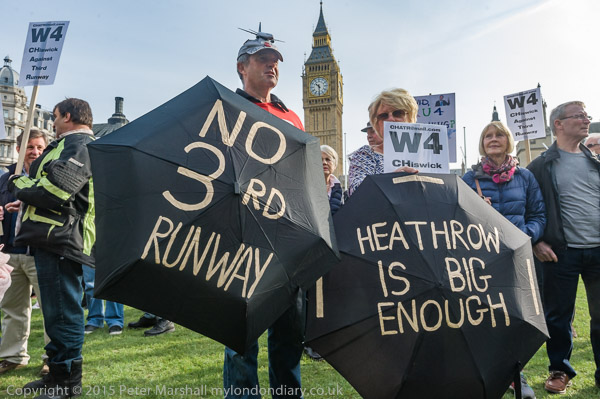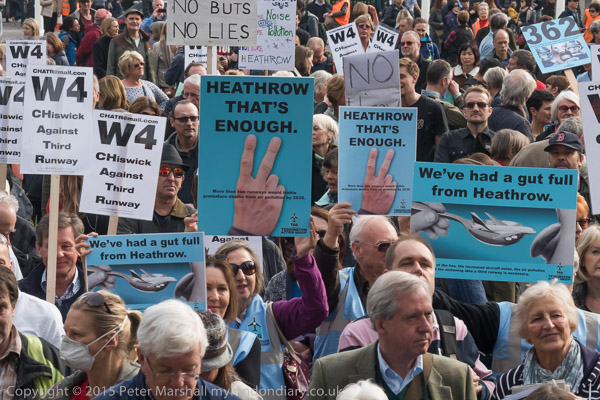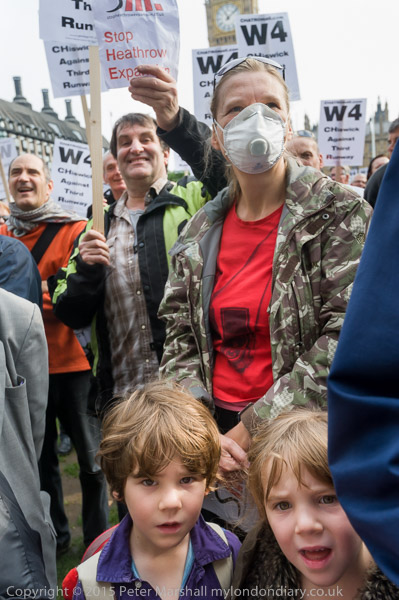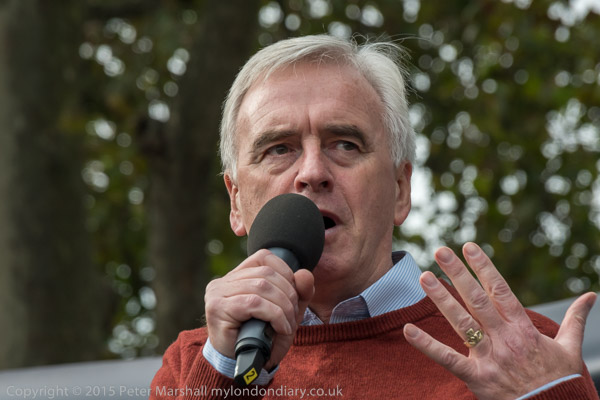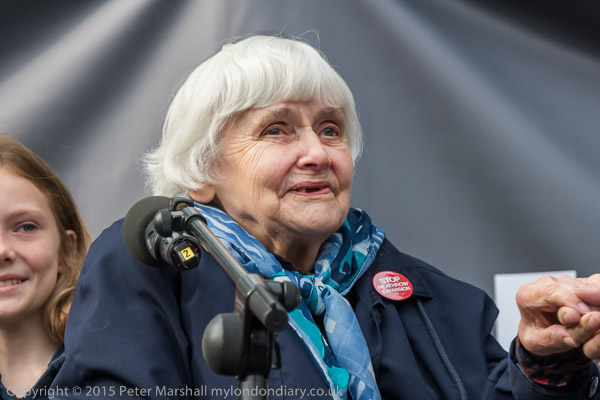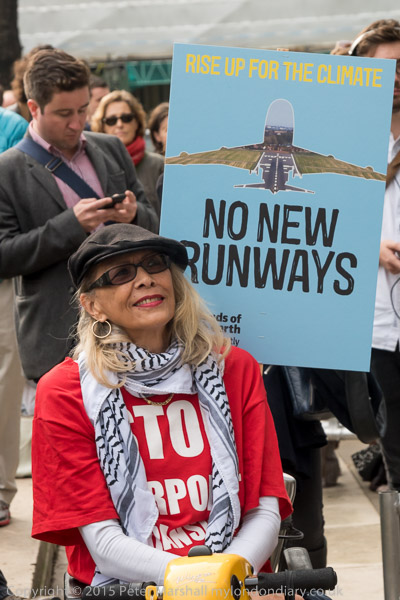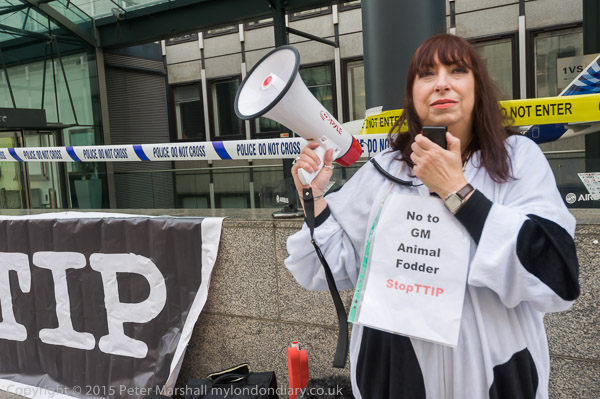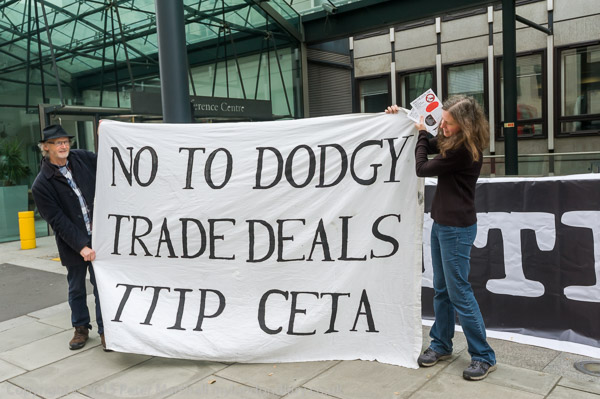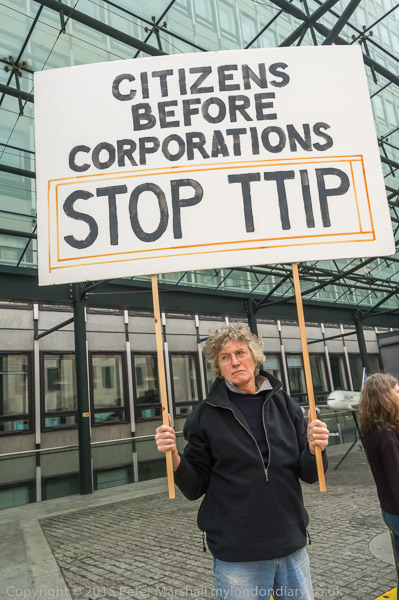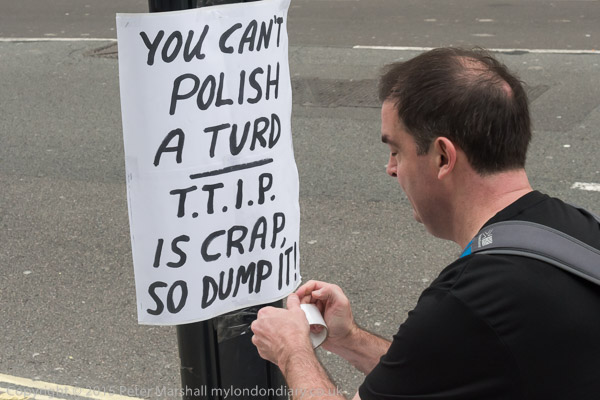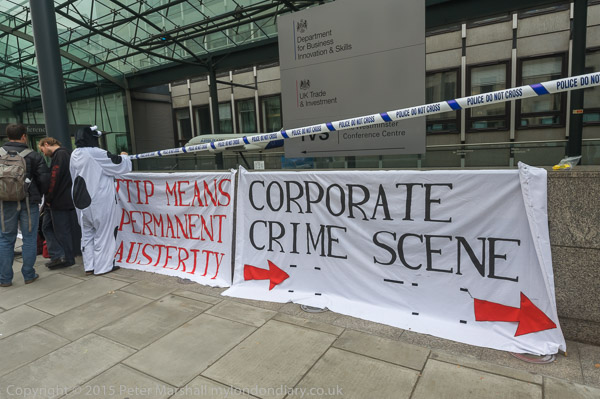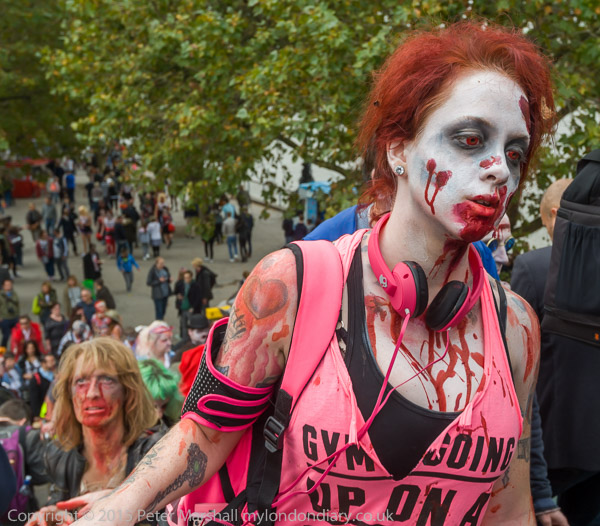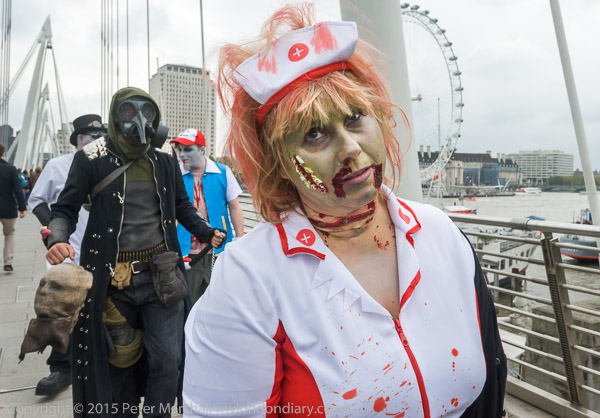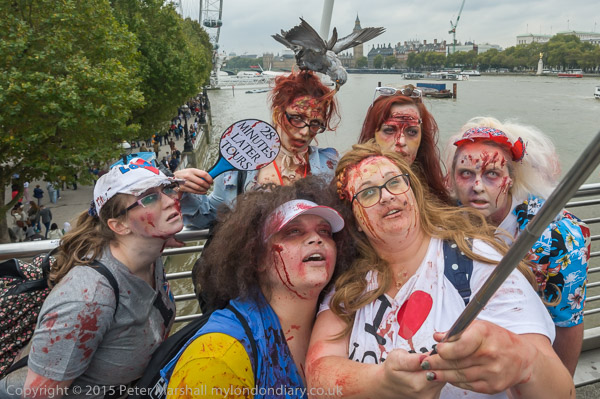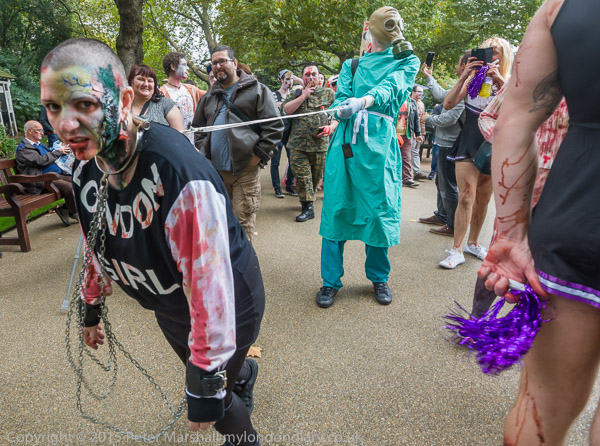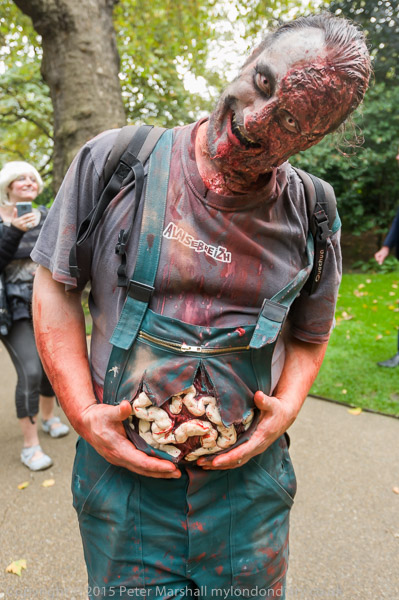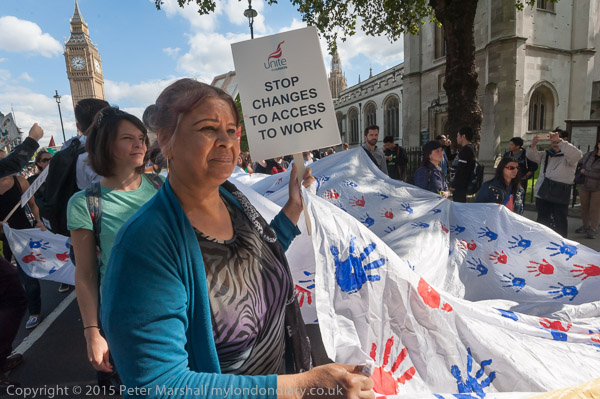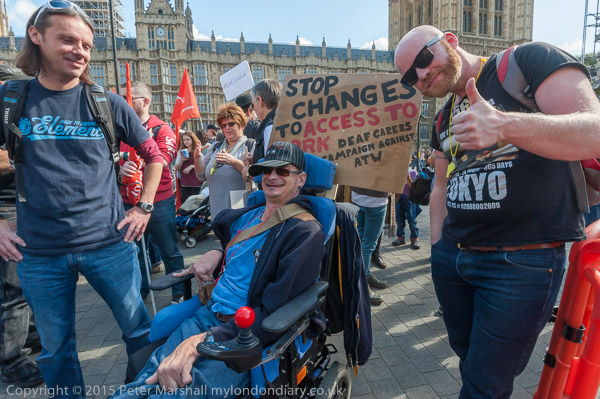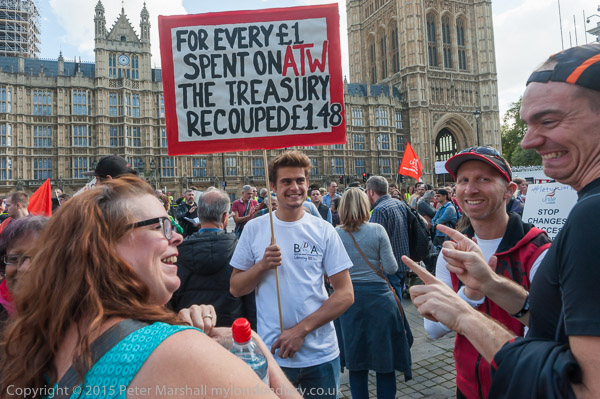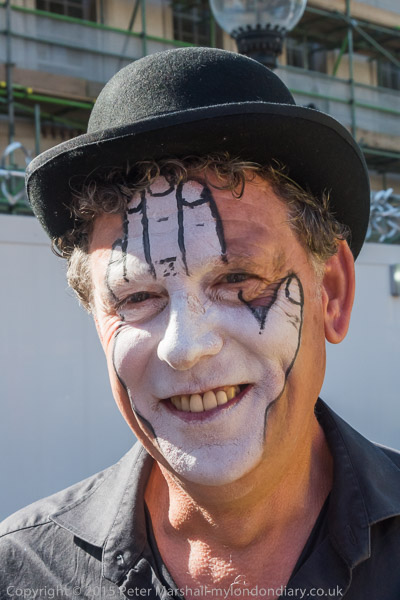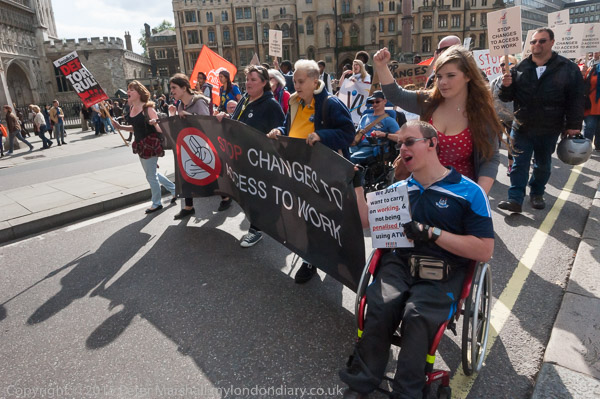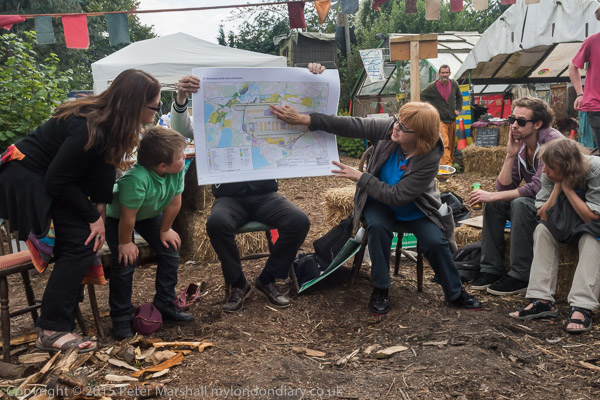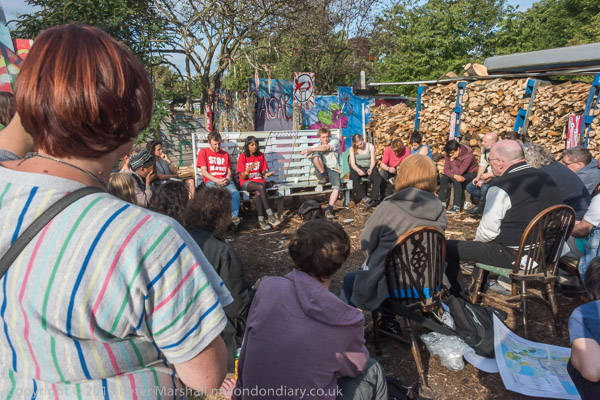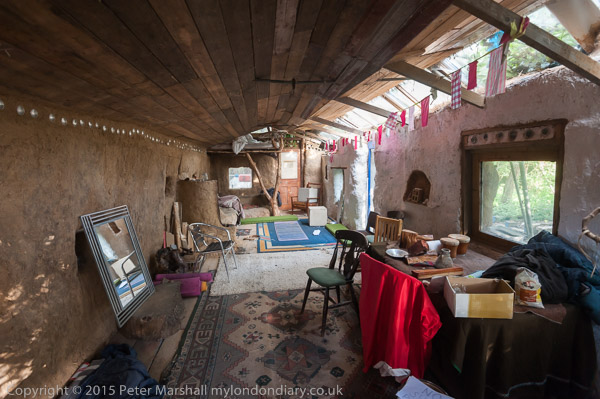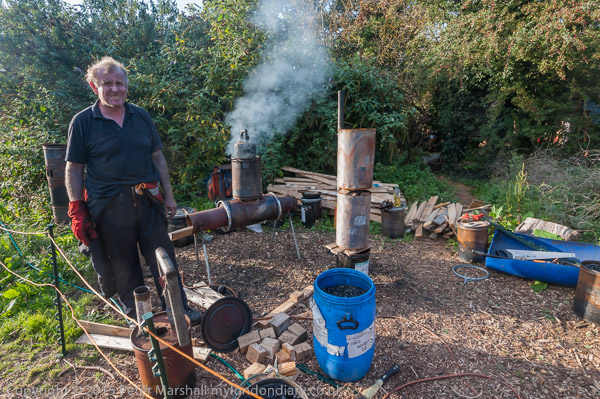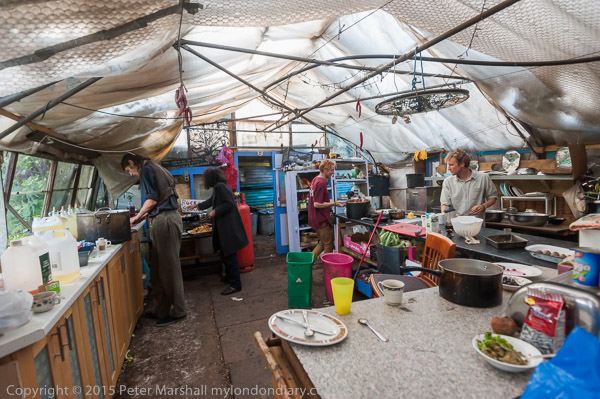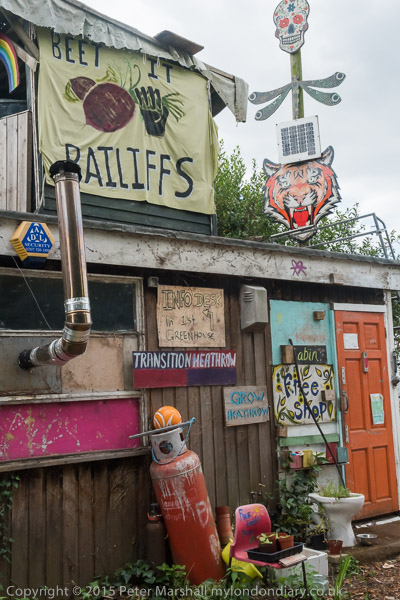Climate Rush in Hayes & Sipson: On Saturday 5th September 2009 I went to Hayes to join a small group of Climate Rushers at a service at the start of a walk by the London Churches Environmental Network. We joined the marchers for the first part of their walk to the Sipson Airplot, set up to oppose plans for a third runway at Heathrow, rushing back there to prepare for the Celebration of Community Resistance which took place in the afternoon.
Climate Rush on the Run – Hayes & Sipson
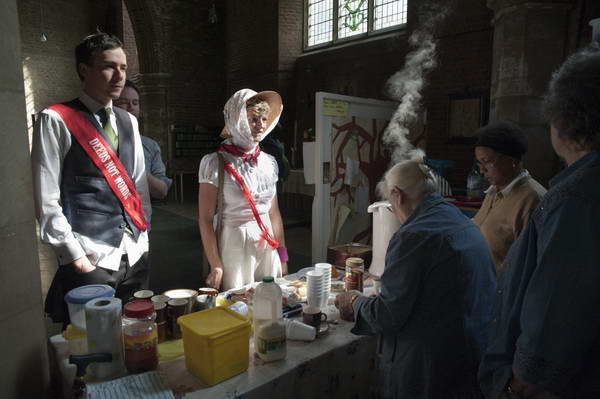
On My London Diary you can read more about the Climate Rush, a group of women who had come together to celebrate the centenary of the 1908 ‘Suffragette Rush‘. In 1908 more than 40 women were arrested in an attempt to rush into the Houses of Parliament, and on 13 Oct, 2008, at the end of a rally in Parliament Square Climate Rush again tried to rush in.
Their protest in 2008 called for “men and women alike” to stand together and support three key demands:
* No airport expansion.
* No new coal-fired power stations.
* The creation of policy in line with the most recent climate science and research.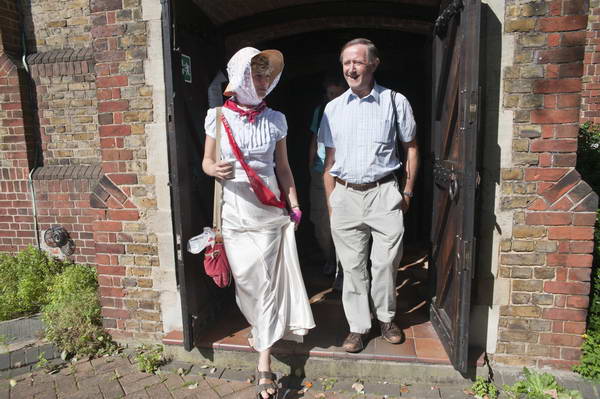
Since then Climate Rush had organised and taken part in various other climate protests and in September 2009 were taking part in “a rollicking tour of South West England“, staging events, supporting campaigns and “entertaining the towns, villages and hamlets” on their route with “16 Climate Suffragettes, 3 horses and 2 glorious caravans“. The Airplot at Sipson was their starting point and I’d photographed their procession to Heathrow the previous day, and later photographed them at a Green Fayre in Aylesbury.
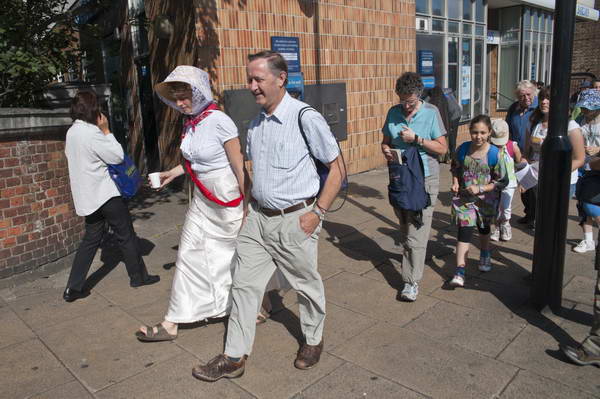
After a service at St Anselm’s Church, Hayes attended by several Climate Rushers we set off with the the London Churches Environmental Network to walk back to Sipson. We left the marchers at Cranford Park to take a shorter route to get back to the Airplot to prepare for the Celebration of Community Resistance taking place there in the afternoon.
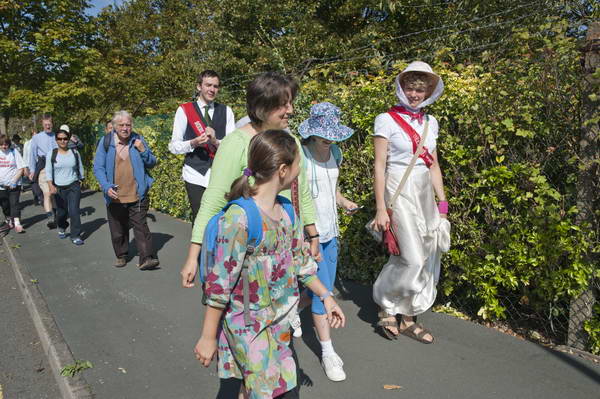
Much more on My London Diary at Climate Rush On the Run!
Climate Rush: Celebration of Community Resistance – Sipson

Greenpeace had the idea of setting up the Airplot, an orchard in the centre of the village of Sipson, one of those under threat from Heathrow’s plans for expansion. They bought the site and created one metre square plots of land there and invited the public to become “beneficial owners“, I think paying one pound for the privilege and receiving a certificate of ownership. Somewhere I may still have mine, but here is one on Wikimedia.

It had seemed a good idea which would make the development more complex, though I suspect would have had little or no effect in practice, but it was never put to the test as plans for the third runway were scrapped by the government in 2010 on environmental grounds – though they have since been revived.
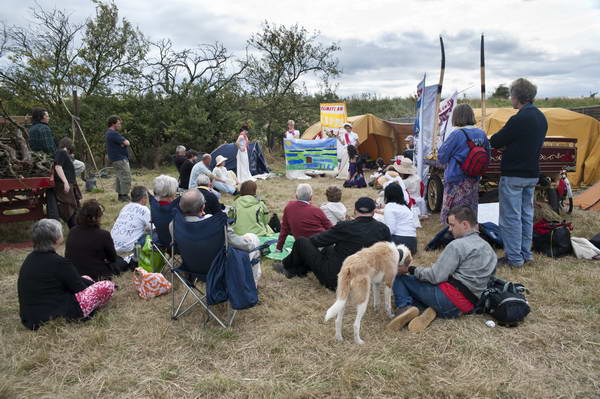
The Airplot was the first stop on the Climate Rush tour and for the Celebration of Community Resistance they had invited activists from around the country to come and give short presentations on their campaigns.
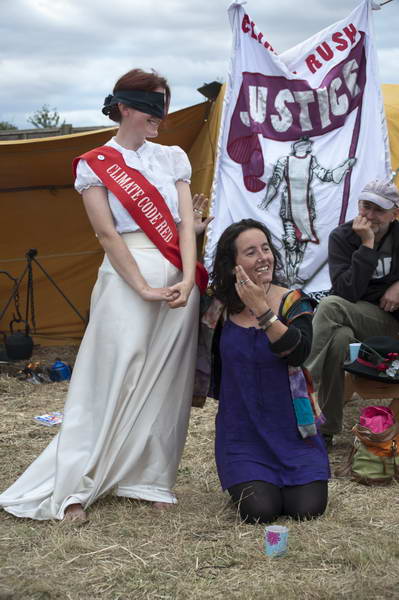
The first example of community resistance we heard about was Radley Lakes at Didcot which npower wanted to fill in with pulverised fuel ash. Although some lakes had been filled, the campaign managed to save three of them. You can see more about them on the Radley Lakes Trust web site.
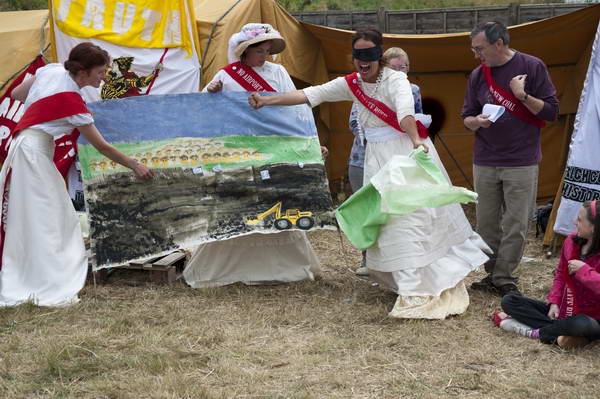
Next we heard about the scandal of opencast mining at Ffos-y-Fran, common land at Merthyr Tydfil. I photographed a Campaign Against Climate Change demonstration against this mine at the London offices of Argent Group plc in April 2008.
“Argent form half of Miller-Argent who run the UK’s largest opencast coal mine, Ffos-y-Fran in Merthyr Tydfil, South Wales. Just 36 metres from the nearest houses, extraction will continue for more than 15 years (perhaps as along as 40 years), producing coal that will add at least 30 million tons of CO2 to to our atmosphere. Scottish safety standards demand a minimum gap of 500 metres from housing, but the implementation of a 350 metres limit by the Welsh office has been delayed – allegedly to allow the Merthyr working to go ahead.”
Coal mining continued here until November 2023, and local residents say that the plans for the future of the site represent the “ultimate betrayal“.
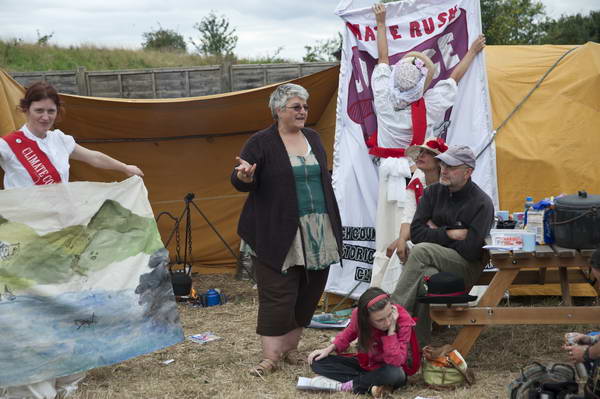
Protesters had come earlier in the year from County Mayo in Ireland for a St Patrick’s Day protest at the Shell building against the Corrib Gas Project. We heard how the Rossport Solidarity Camp and the Shell to Sea campaign were fighting this against a corrupt government and thugs who protect the oil companies interest by illegal methods. While the protests failed to stop the project, the environmental groups involved continue to highlight related issues.
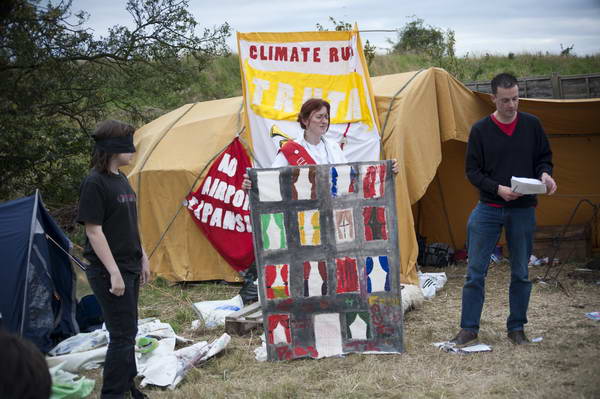
Cathy McCormack, a community activist in Glasgow Easterhouse was unable to attend but a colleague came to read her views on poverty and the financial crisis, and in particular the part played by the World Bank and the IMF.
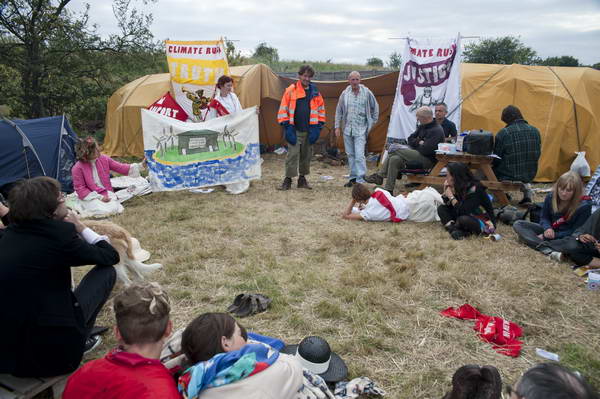
Next we heard from two former Vestas workers who sat in their factory in Newport on the Isle of White when the company proposed the closure of what was then the UK’s only major wind turbine production site. Unfortunately they failed to prevent the closure.
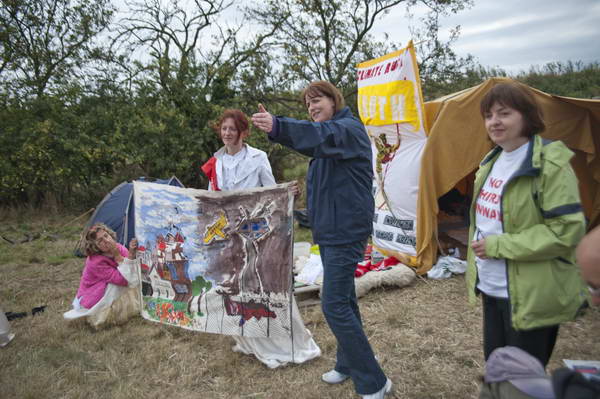
The last group to talk were the No Third Runway Action Group (NoTRAG), and Geraldine described how they had opposed the BAA plans for airport expansion.
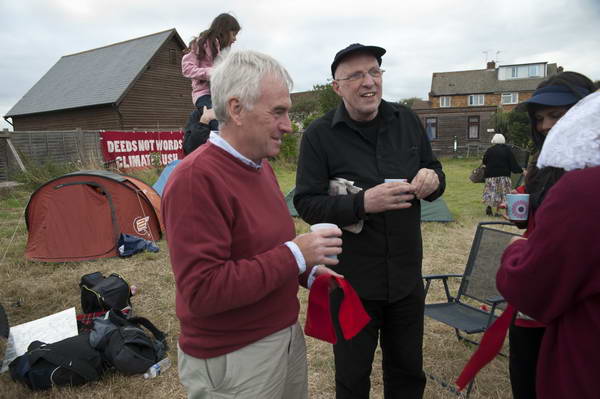
In the audience watching the presentation were local MP John McDonnell and airport campaigner John Stewart of HACAN. The campaigners won that round against Heathrow’s plans – and we celebrated in 2010, but today there are new plans – and a government which only plays lip-service to the coming environmental diaster seems sure to back either Heathrow’s own proposals or that from the Arora group, and the fight is on again.
Many more pictures on My London Diary at Celebration of Community Resistance.
Flickr – Facebook – My London Diary – Hull Photos – Lea Valley – Paris
London’s Industrial Heritage – London Photos
All photographs on this page are copyright © Peter Marshall.
Contact me to buy prints or licence to reproduce.
